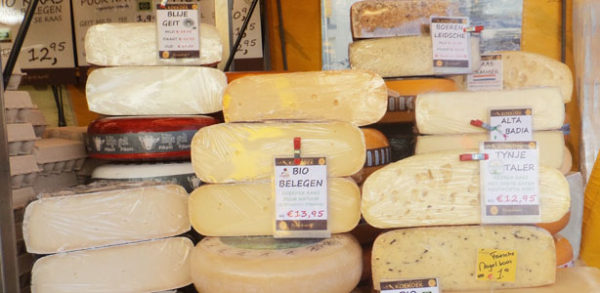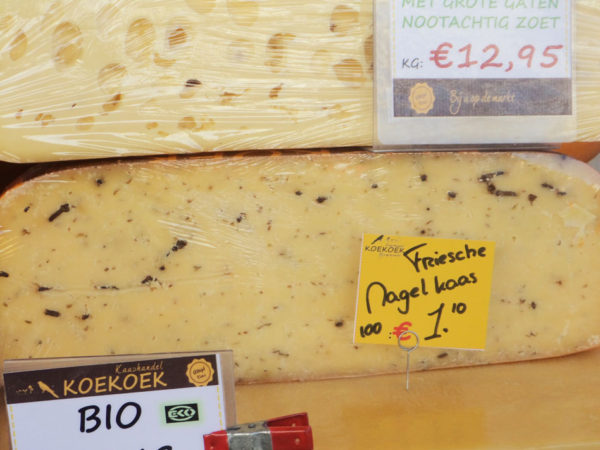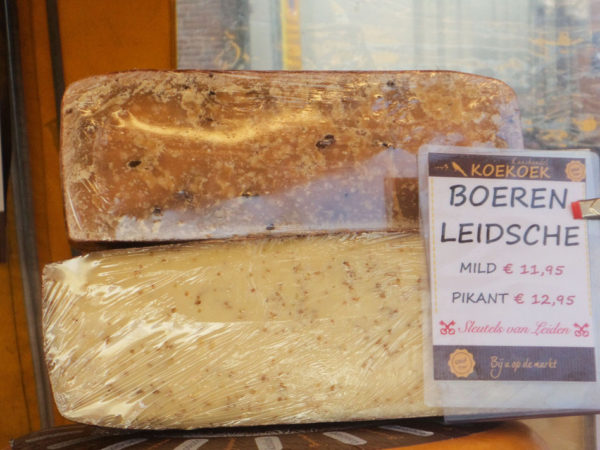You know you are properly integrated when you pronounce it Ghowda and not Goodah. Yes! It’s time to expand your horizons beyond Gouda cheese. The Netherlands has many more types of cheese to offer.

Here is just a selection:
Gouda
We do need to start with this, the most well-known. Many people find it bland, but this is probably because they are eating the ‘jonge kaas’ version, rather than the jong-belegen, belegen, extra belegen, oude or over-jarige kaas. These terms refer to the maturity of the cheese or in other words how long it has been sitting on a shelf at the cheese makers (being turned regularly) before it is brought to market. The more mature the cheese, the intenser the flavour and the firmer/more brittle it is.
-dam
There are many more cheeses named after the places they were originally made, many appear to have the suffix -dam, as in Edam (the famous red balls), Leerdam, Maasdam, but also Beemster, Zaanland etc. The flavour differences between them are quite subtle, yet distinct.
Komijnenkaas
The basic cheese is similar to Gouda, but it is flavoured with cumin seeds. Try it on wholemeal bread with sliced tomato for example – yum! This cheese is also known as Leidse kaas.
Other flavourings
Komijnenkaas is the most well-known and traditional of the flavoured Gouda-type cheeses, but you can now get it flavoured with pesto, red peppers, fenugreek, garlic, even the Indonesian sambal!
Northern Cheese
Each region has their own cheeses. The most famous Northern one is Friese nagelkaas. This is a hard dry cheese flavoured with cloves and cumin. Nagel is the Dutch word for nail and kruidnagel literally means nail of spice.

Time of the year
Depending on the time of the year and whether the cows that produce its main ingredient are out in the fields or in their winter stables, cheese can be designated graskaas (grass cheese) or hooikaas (hay cheese). Also meikaas (May cheese); the first cheese (only 1-3 weeks old) after the winter indoors.
Boerenkaas
Farmer’s cheese. Cheese can only have this label when it is made by the cow’s farmer on the farm itself using traditional methods.

Blue cheese
Not prevalent, but again the north comes to the rescue: Bleu de Wolvega! It is a Frisian hard blue cheese.
Want to see if you might like some Dutch cheeses? Want to move away from just the jonge kaas served on rolls at meetings and luncheons? Go to the Tuesday or Friday markets in Groningen city centre and ask to sample some cheeses at the various cheese stalls and go home with a piece of your favourite!
Photos are of the stall of Kaashandel Koekoek on the Groninger Vismarkt.
 +31 (0)50 367 71 97
+31 (0)50 367 71 97  info@connect-int.org
info@connect-int.org